Last week marked the seventy-fifth anniversary of the end of the Battle of Iwo Jima. It was the first conquest of sovereign Japanese territory in the Pacific War. That the island would fall was a certainty from the very beginning, but the Japanese intended to make the American cost of taking it so severe that they would reconsider ever invading the Japanese home islands. On this point, the Japanese condemned themselves by their very success.
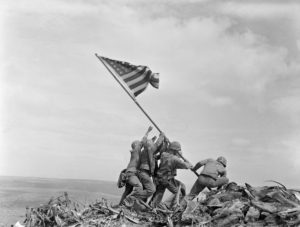
A volcanic ferment, Iwo Jima—or Sulphur Island—is eight square miles of spewed earth some 650 miles south of Tokyo. As a physical thing it is decried for its ugliness. William Manchester in Goodbye, Darkness, his memoir of the Pacific war, denounces Iwo as “an ugly, smelly glob of cold lava squatting in a surly ocean.” Its porkchop-shaped landscape—already conjuring images of butchered meat—is an unrelieved gray, gray-green, brown, and black, the hues of camouflage. It’s as if the reeking island was gestated and purpose-bred for war. Just so, from February 19 to March 26, 1945, 6,821 Americans and approximately 20,000 Japanese died in the fight. Twenty thousand more Americans would be wounded. Not so the Japanese. Estimates vary, but only about 216 of the 21,000-strong Japanese force survived the fight. Iwo was the only island battle of the Pacific War in which US casualties outnumbered Japanese.
US battle planners expected the fight to last under a week. The optimism wasn’t entirely without justification. By this point, the US Navy enjoyed near-total domination of sky and sea, and offshore of Iwo, the US Fifth Fleet’s months of naval and aerial bombardment of the island were thought to have killed or taken the fight out of the defenders. The V Amphibious Corps, comprised principally of the 3rd, 4th, and 5th Marine Divisions, owned a 3-to-1 advantage over the defenders, and were better armed, more experienced, and more exhaustively supported than any fighting force in the preceding Allied island campaigns. The US force represented the zenith of forcible entry from the sea.
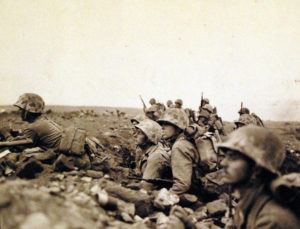
Nevertheless, along with much else, optimism died upon landing. The battle would grind on for 36 days, more than four weeks beyond the iconic flag-raising, which many assume marked the end of combat. This prolonged battle signaled that the Japanese, too, learned their lessons from previous fights. Commanding the defense, Lieutenant General Tadamichi Kuribayashi broke with Japanese doctrine established in earlier battles in the Gilbert, Marshall, and Mariana Islands. Instead of directly defending the beaches, Kuribayashi held back, defending more in depth. The initial landing itself received only a comparatively modest defensive response. Kuribayashi waited until, 20 minutes in, the beach was crowded with men and equipment before unleashing overlapping artillery and machine gun barrages from every angle. Deeper in, he also utilized a deadly network of nearly a dozen miles of tunnels connecting more than 1,500 concealed ammunition dumps, pillboxes, artillery emplacements, and bunkers. If the US Marines fought on Iwo Jima, the Japanese fought in it. Not only did this network allow the Japanese to largely weather the preparatory bombardments, it gave them the ability to reoccupy positions initially cleared by the Marines, causing confusion, a lethally porous frontline, and the continual reestablishment of pre-registered killing zones. Kuribayashi also refused to allow his subordinates to indulge in vainglorious and ineffective banzai charges. That every Japanese would die was presumed. But they would not gift the Americans easy targets.
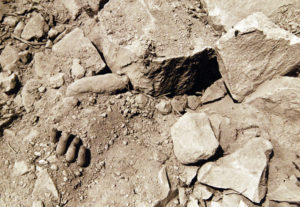
Die the Japanese did. The 216 or so Japanese survivors were largely unintentional. Most of the Japanese taken alive were too wounded to continue fighting or to kill themselves. All war emanates a tragic stench—but the pointless fight often seems both tragic and unjust. The ominous setbacks for the Japanese in the summer and fall of 1944, culminating in the disastrous naval defeats for the Imperial Navy at the Battles of the Philippine Sea—where the Japanese lost the air—and Leyte Gulf—where they lost the sea—made clear to Japanese military leaders the ultimate fate facing Japan. The loss on the water at Leyte opened up the beachheads on the island to Allied invasion. The subsequent inability of Japanese land forces to dislodge the invaders in turn signaled the inevitable loss of the Philippines in its entirety. This was a blow from which the Japanese could not—and did not—expect to recover. Japan now knew herself to be cut off from the territories she occupied in Southeast Asia, resulting in the loss of desperately needed materials—primarily oil for ships and aircraft as well as food—to continue any reasonable prosecution of its war.
But if by January 1945, in light of its decimated naval and air forces, the Japanese people—increasingly prey to almost at-will Allied air attacks—grasped their doom, in the wake of Iwo Jima’s fall, their coming destruction became incandescently clear. At this point, if not sooner, the Japanese leadership’s failure to even consider surrender in the face of her impossible odds leaves her wartime governors culpable for the military actions that followed—including the near-impossibly grim choices the Allies faced in how to end the war.
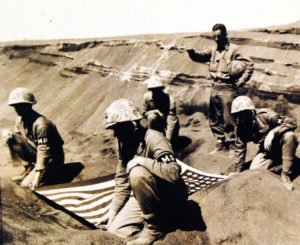
The Battle of Iwo Jima displayed a Japanese strategy of desperate insanity, one which they continued in Okinawa. This strategy, born of the desperate illusion that they could somehow preserve their dream of empire, aimed at bleeding the Americans so completely that they would negotiate a ceasefire rather than suffer the price of invading the Japanese home islands. The Japanese knew they could not win a victory, but they endeavored in their defeat to wrest concessions, including the retention of not just their imperial dynasty, but of their military hierarchy and at least some of the hard-won territorial acquisitions. Further, they wanted no demobilization, no war crimes trials, and no occupation of the homeland. This arrangement was as foolish to hope to be handed as it was to attempt to seize.
Following Iwo Jima, the Battle of Okinawa proved the bloodiest fight of the Pacific War. The imperial war machine threw upwards of 225,000 souls into its suicidal scheme, including around 150,000 civilians and 77,000 warriors. The civilian count includes some 40,000 Okinawan civilians the Japanese army pressed into combat.
The Americans absorbed their lesson. Faced with the prospect of invading a homeland defended by more than 4 million uniformed military personnel and, as on Okinawa, the certainty of wide civilian conscription—as many as 32 million mobilized citizens being trained to defend their sacred soil with whatever weapons they could fashion—America sought another way forward. Yet even after those bombs detonated over Hiroshima and Nagasaki, the Japanese war cabinet never abandoned its negotiation strategy to compel a ceasefire. Only Emperor Hirohito’s intervention overrode the push for a decisive land battle. Whatever his previous complicity, in the wake of those horrible bombs he finally exorcised from the Japanese their zealous resolve to perish as a people rather than surrender.
It is a matter of moral prudence, in the just war tradition, to know when a fight has fully been fought and should finally be abandoned. The debate remains unresolved as to when Japan ought to have stood down and whether Allied demands for unconditional surrender were justified. What remains without dispute is that as the setting sun burned out over the smoking ruin of Iwo Jima ominous shadows were cast across the Pacific. Looking back, one of them looked a lot like a mushroom cloud.
Essential Reading:
Chuck Tatum, Red Blood, Black Sand
William Manchester, Goodbye Darkness
Francis Winters, Remembering Hiroshima: Was it Just?


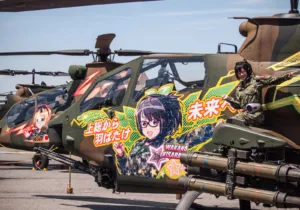

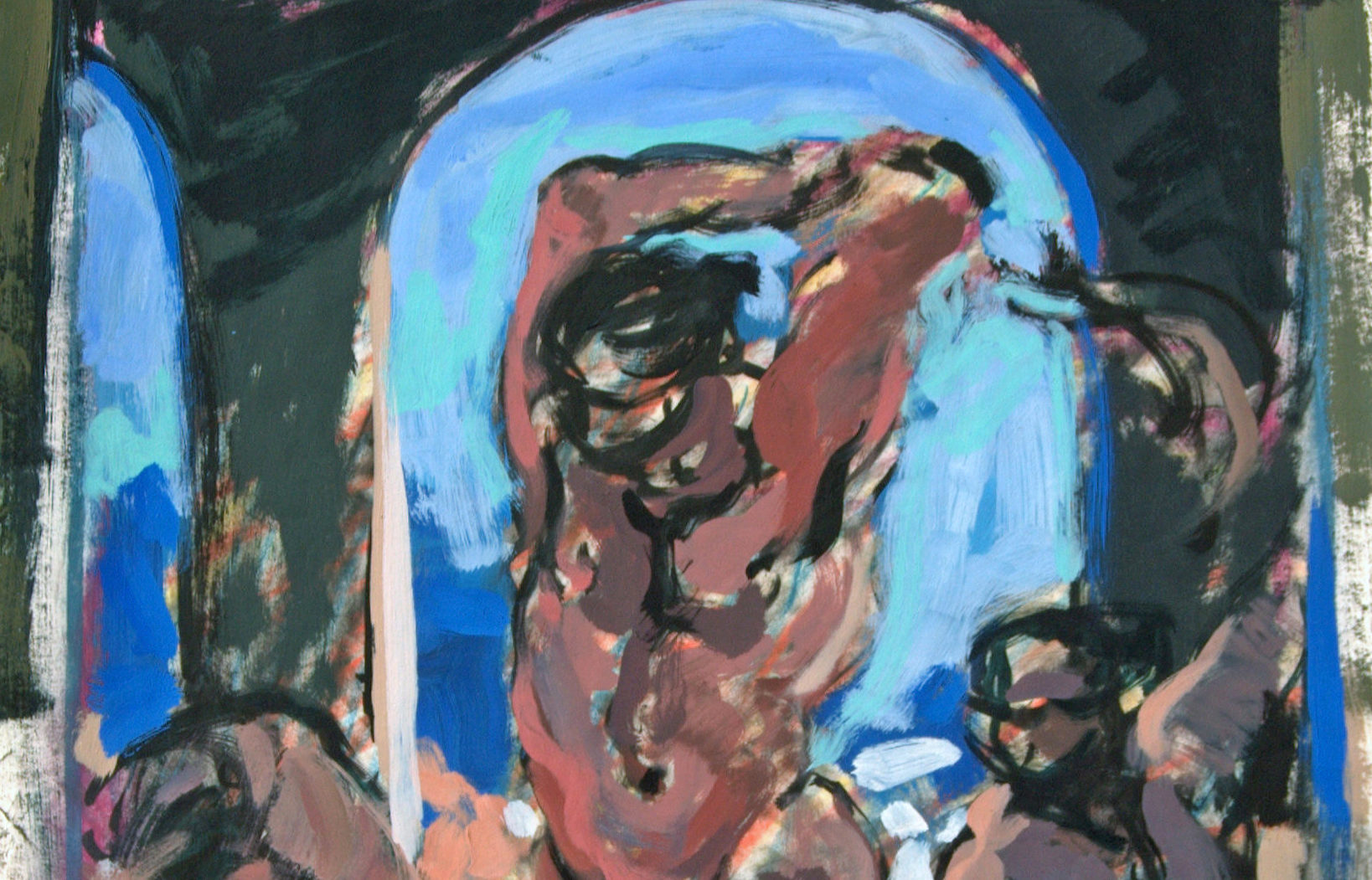
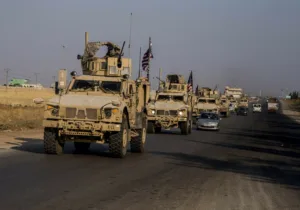

 Live in the DC area? Sign-up for Providence's in-person events list!
Live in the DC area? Sign-up for Providence's in-person events list!